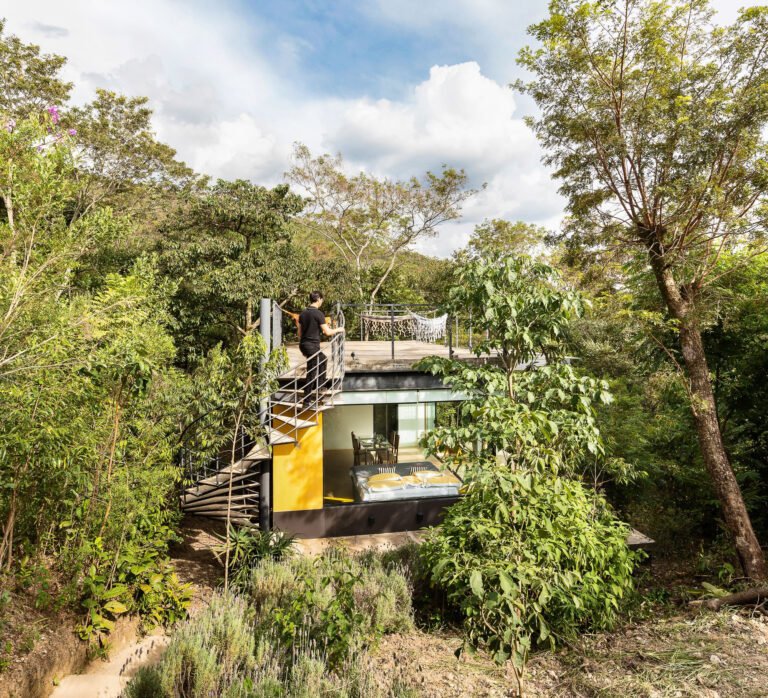9 Easy Steps for Seeding Grass—Your Neighbors Will Be Green With Envy
Landscaping an emerald lawn comes with an important skill: seeding grass. The health of your existing lawn—front yard or backyard—is decidedly linked to the state of your grass. A verdant yard can’t exist on its own, and it’s good practice to reseed every three to four years. The frequency of seeding grass often depends on foot traffic and whether pets have wreaked havoc in your yard and left bare spots. Maintaining your grass not only helps with weed control but will keep larger areas from thinning out. Seeding grass regularly is what gives your lawn that plush density and curb appeal.
“During the 1800s and 1900s, lawns were considered a status symbol,” David Angelov, CEO of PlantParenthood in Swampscott, Massachusetts, says. “Back then, it was really hard to maintain, so if you had a pristine lawn, you were considered in good status.” Whether you want to live like nobility or grow a small patch of new grass, here is the DL on seeding grass.
What is grass seed?
All existing lawns start from grass seedlings at some point. If you skip seeding grass, your yard will look like an unkempt plot. Grass seed is exactly what it sounds like: the seeds from which new grass will germinate. Generally, grass seeds are a light tan color and range in size from a quarter of an inch to three-quarters of an inch, depending on the variety. Angelov points out that the grass lawn is made up of millions of tiny individual plants that are matted together. “When the seed germinates, it spreads the root down,” he says. “Each seed shoots up one blade of grass, and then they spread like a carpet.”
How do you choose the correct grass seed for your lawn?
The best grass seed for your lawn comes down to a few factors: local climate, expected usage, and the aesthetic. First determine whether your lawn is best suited for warm-season grasses or cool-season grasses.
Then, consider foot traffic. Do you plan to entertain or play on your new lawn? Decide if the grass will endure the shenanigans. Look at your existing lawn and landscaping and note the amount of shade your yard is getting. Finally, think about how you want the lawn to look. Outlining these considerations is especially helpful when asking for recommendations when you head to a local nursery or garden store.
What are some common grass seed varieties?
Grass seed comes in many different types, each with its own look and care requirements. For lawns, you’ll usually find turfgrass, which is narrow-leaved grass seed species that you can mow short, about two inches or shorter. This grass seed can tolerate foot traffic well. Generally, turfgrasses are divided into two categories: warm-season and cool-season grass.
Warm-season grasses begin active growth in late spring and are generally more tolerant to heat. Cool-season grasses, on the other hand, begin active growth much earlier in the season, usually mid spring, and grow better in cooler climates. Some common grasses you’ll find as part of a lawn include:
- Bermuda grass: a warm-season turfgrass that grows well in southern parts of the United States. This grass can tolerate harsher conditions like high heat, droughts, and heavy foot traffic—making it a favorite when it comes to easy lawn care.
- Centipede grass: another type of warm-season turfgrass, common in southern parts of the United States. It’s known as a relatively low-maintenance grass that can grow in poor soil conditions.
- Fescue: a cool-season turfgrass popular in northern parts of the country, or in areas that experience both hot and cold weather. It’s a popular choice among homeowners who are looking for weather and drought-tolerant grass. Fescue varieties include: tall fescue, which has flat blades common to many lawn grasses, and fine fescue, which has fine, sometimes needlelike blades.
- Kentucky bluegrass: another cool-season turfgrass. It’s a popular choice throughout the northern United States and generally grows best in areas where summer temperatures don’t get hotter than 75 degrees Fahrenheit.
- Perennial ryegrass: a cool-season turfgrass popular for its speedy germination. It takes about three weeks to go from seed to a ready-to-mow lawn.
- Zoysia grass: a warm-season grass native to tropical areas in East Asia. It creates a dense lawn and is resistant to weeds and drought. However, it can only tolerate light shade.
What month is best to put grass seed down?
Like so many aspects of grass seeding, the answer to this question comes back to whether you’re planting warm-season grass or cool-season grass. The best time of year to plant warm-season varieties is during late spring or early summer. Warm-season grasses tend to germinate best when soil is consistently between 65 and 70 degrees Fahrenheit (this soil temperature corresponds to daytime air temperatures of around 80 degrees Fahrenheit.)
Cool-season grasses are best planted in early fall, at least 45 days before the first frost of the season. To estimate, look to last year’s weather reports or ask a veteran nursery expert. These varieties germinate best in soil between 50 and 60 degrees Fahrenheit, which roughly correlates to daytime air temperatures in the 60 to 75 degrees Fahrenheit range. Purchasing a soil thermometer can help you time and plan your grass seeding accurately.
Regardless of whether you plant warm-season grasses or cool-season grasses, the goal is to plant the seed when it’s not too hot. “Weeds flourish a lot faster in the high heat, so they outcompete the grass seed when it’s hotter,” Angelov explains, noting that if you plant grass seed when it’s too warm, you’ll get a patchy lawn.
Can you just sprinkle grass seed on the lawn?
Your grass seed plan depends on your end goal. If your yard has bare spots or thinning grass patches but the majority of the lawn is in good shape, you may only need to overseed the lawn. Overseeding is a technique that consists of planting new grass onto an existing turf. In this case, spread grass seed over the existing turf to fill in any of those bare spots and give the yard a little face-lift. If overseeding, first mow the lawn shorter than usual, then use a handheld spreader to add the seed to the grass.
On the other hand, if you’ve slacked on lawn care and the majority of the lawn is made up of dead grass or without any grass at all, you’ll likely need to reseed and grow a new lawn with a seed mix, like Scotts Ez seed. Follow these steps for a greener pasture.
For seeding grass, you’ll need:
What is the best way to seed grass?
Once you’ve picked your grass seed and timed your efforts, you’re ready to seed the grass. “This is definitely a project you could do without involving anyone else,” Angelov says of a novice who has time to prep the soil.




